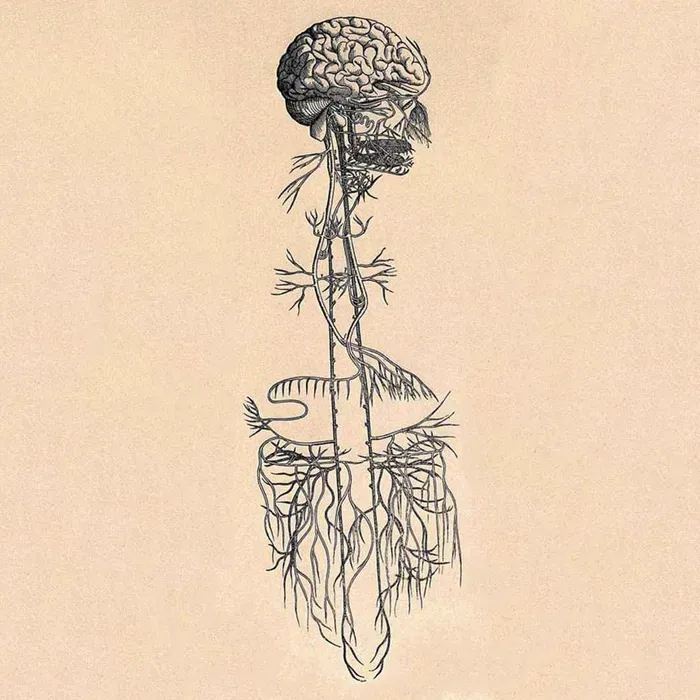The Current Crisis in HRV Wearables, Apps and Research

TLDR: Heart rate variability (HRV) apps and wearable are exploding in popularity and telling people how stressed or recovered they are. But currently, none of them distinguish between being relaxed and recovering from being in a stress or trauma induced shut-down. This is not a subtle distinction and this is not a small problem.
As the quantified self movement progresses and people can get immediate access to accurate data about their physiology and activities, there's an increase interest in the power of heart rate variability (HRV) to measure recovery. The Oura ring, the Whoop, the Apple Watch, and Garmin watches and countless others are using the heart's rhythm to feed back to people whether they're over doing it or are balancing rest and play.
I first became interested in the potential of HRV as a biomarker for measuring resilience when doing my first MSc in Acupuncture. HRV is an easy and inexpensive way to get an accurate glimpse at the state of the nervous system and how well the brain and heart are communicating.
Briefly, HRV is the variation in your heart beat. Somewhat counterintuitively, more variation, within reason, is a sign of greater health. You can imagine all the sounds of a forest biophony on a summer night, all the variation in the chirps and croaks as an obvious sign of diversity and vitality.
A monotonous steady drone punctuated by clamor would be more like the sounds in a city, a less complex, less resilient ecosystem.
So a higher HRV is an accurate window into the health and resilience of our nervous system. Well, accuracy of data collection doesn't quite guarantee accuracy of interpretation, which we'll get into in a moment. But as a single marker, it does more than any other to encompass the vitality & resilience (or lack there of) of your body-mind complex.
One recent paper describes the wide-reaching insights we can get from HRV:
How healthy are individuals? How effective is their thinking, their stress management, their emotion regulation? How effective are they at developing social relationships? Wholly, how efficient are their self-regulation mechanisms driving their behavior? Surely, you think that the precise answer to each of these questions would take hours and the use of dozens of measures such as cognitive tests, questionnaires, blood analyses, electrocardiogram measurement, electroencephalogram measurement, and so on. This would be completely right. But let’s now imagine that there would be a simple way to summarize all this information in one summary indicator. . . cardiac vagal control.(1)
Studies on conditions from heart disease, kidney disease, cancer to psychological diagnoses like anxiety, depression, OCD, PTSD and bipolar to developmental challenges like autism and ADHD all demonstrate a robust correlation between lower heart rate variability and greater risk of illness and death.
Higher HRV is robustly linked to greater executive control and better decision making as well.
Due to strong association between vagal activation and health markers, there's a whole slew of advice around how to stimulate the vagus nerve: from vibrating gadgets, gargling, humming to surgical implants.
So what's the problem? Well to understand, we'll need to look at how the nervous system works.
Polyvagal Theory and the Evolutionary Story of How We've Survived
Many people are aware of the two branches of the autonomic (think "automatic") nervous system: the relaxed "rest and digest" parasympathetic and the stressed "fight and flight" sympathetic nervous system.
But there's actually a 3rd older branch; see the parasympathetic nervous system's longest nerve, the vagus nerve, has a dual mode. Before the vagus leaves the brainstem, it actually has two places where it "plugs in" and then the wires connect and leave together like fiber optic cable. The connection in front towards your belly is called the ventral vagal nucleus and is evolutionarily more recent. The one towards the back is called the dorsal vagal nucleus and is older than the sympathetic system. We could freeze and play dead before we could run away; trying to verbally negotiate ourselves out of awkward situations or phoning a friend would come later. (2)
So the vagus nerve can facilitate calm connection, digestion and relaxation through its ventral branch. But in the case of a life-threatening situation, if we're unable to fight or flee, it might slam on the break to make us freeze like a deer.
Or if we're going to get eaten, it can make us collapse like a possum or a fainting goat.

You can think of the vagus nerve partly as a break on your system. Now imagine you're driving a car and you want to slow it down. You might take your foot off the gas, this is actually the smoothest option. You could gently apply the break (ventral vagus) or if some lunatic cuts you off, you can slam on the breaks. If you're about to drive off a cliff, you could pull the emergency hand break (dorsal vagal system).
None of the HRV Apps Understand the Nuance Behind Our Stress Response
So how does this apply to HRV interpretation? HRV isn't a single number and the math gets pretty squirrelly pretty quickly. I'm not going to delve into it here because, frankly, it's not necessary for explaining the issue.
Without the input of the vagus nerve, our resting heart rate would be about 100 beats per minute, pretty darn fast. So at rest, it's the vagus nerve that keeps calmer and slower.
Overall, HRV tells us about how much control over the heart rhythm is coming from the vagus nerve. The higher the variation, the more input from the vagus nerve.
And that's the problem - for most people, when they are stressed, their sympathetic nervous system gets amped up. In other words, heart rate goes up and HRV goes down because the vagus nerve has eased off and given more control over the heart rate to the sympathetic system.
But for a significant proportion of the population, especially those with a history of childhood trauma, inherited trauma, and concussions, a stressor actually triggers sympathetic withdrawal and increase of primitive dorsal vagal system, meaning that the heart rate goes down and HRV goes up.
It Turns Out that I'm a Fainting Goat
I first noticed an issue when I went for some major dental surgery a couple years ago. They measured my blood pressure as a routine pre-op vital: it was 90 over 50, 10 points lower than my normally "nice and low" BP.
"You are one cool cucumber, Hoppity Kop" I thought to myself.
Six months later, I went down to Florida for a 5 day residential at a world-renowned functional neurology clinic for treatment for post-concussive syndrome (lots of hits to the head as a kid, which I'm sure explains a lot for those who spend any time with me). When they measured the change in my blood pressure from sitting to standing, which should go up in order to keep blood going to the brain, it actually went down 20 points.
Meanwhile, my Oura ring was dutifully reporting my overnight HRV every morning. The higher it was, the shittier I felt.
More recently, I sported a FirstBeat medical grade ECG and used it paired with their app; this is the most widely worn consumer device for measuring and reporting continuous 24 HRV, used by professional sports teams, senior execs and countless thousands. After wearing it for 7 days, it flagged the stand-out night that I slept terribly, tossing and turning, pain in my hips, struggling to get to sleep as the night I experienced by far the most "recovery."
It turns out, trauma creating a shut down response to stress can actually be inherited. A growing evidence based shows that adult children of holocaust survivors have a lower output of cortisol, a hormone resulting from sympathetic activation. This effect also appears to be present in infants born to mothers who were in New York during the 9/11 attacks (3) Other research shows that PTSD from the Holocaust affected children and grandchildren.(4)
In addition to getting hit in the head a lot as a kid, I'm also the granddaughter of a Holocaust survivor. And I was also in New York on 9/11, watching the second tower collapse from my bed room, having moved to New York the week before for college.
So can HRV wearables be useful?
After over a decade of looking at HRV apps and wearable and taking a number of advanced courses, I've discovered that 100% of the literature, wearable, apps and software interpret this increase in HRV as a "relaxation" response rather than the threat-induced survival shut-down that it really is.
So what can we do? Well, I believe there is a way to identify the majority of people who have this paradoxical response to stress. Simply have them stand up.
Standing up is a perfect "stressor" that can show us how our system is responding to stress. When we stand up, we need to increase our blood pressure so that blood goes to our brain (turns out, our brain appreciate having a steady blood supply). This means that we need to ease off the breaks on our heart rate by gently withdrawing the vagus nerve and allowing more action from the sympathetic system.
For those chronically stressed souls with a flagging vagus or not enough of the parasympathetic neurotransmitter acetylcholine, the break flies off and you experience POTS (postural orthostatic tachycardia syndrome): racing heart, dizziness, etc.
And for those in some form of dorsal vagal shut down, when you stand up, the break of the vagus nerve doesn't release smoothly or quickly enough and you experience postural hypotension, a drop in blood pressure on standing. Heart rate doesn't go up enough or at all to compensate. You might feel dizzy, you might be prone to fainting or you might be completely unaware that this is happening at all.
So please let this serve as a caution to you, the health seeker and a call to action to the wellness community using these metrics with good intention. Look out for your patients with low normal blood pressure and low normal HR who are struggling to function.
Until then, if you are someone who has a typical response to stress, meaning that your heart rate and blood pressure go up, then the existing technology is probably fine for you and you can likely take the interpretations at face value.
But if not, if your blood pressure and heart rate drop when stressed, use your HRV reporting wearables with considerable caution until they are able to distinguish between chilling out on the beach and collapsing before getting devoured by a tiger.
References
- Laborde, Sylvain, Emma Mosley, and Alina Mertgen. “Vagal Tank Theory: The Three Rs of Cardiac Vagal Control Functioning – Resting, Reactivity, and Recovery.” Frontiers in Neuroscience 12 (2018). https://www.frontiersin.org/articles/10.3389/fnins.2018.00458.
- Porges, Stephen W. “Heart Rate Variability: A Personal Journey.” Applied Psychophysiology and Biofeedback 47, no. 4 (December 1, 2022): 259–71. https://doi.org/10.1007/s10484-022-09559-x.
- Yehuda, Rachel, and Linda M. Bierer. “Transgenerational Transmission of Cortisol and PTSD Risk.” In Progress in Brain Research, edited by E. Ronald De Kloet, Melly S. Oitzl, and Eric Vermetten, 167:121–35. Stress Hormones and Post Traumatic Stress Disorder Basic Studies and Clinical Perspectives. Elsevier, 2007. https://doi.org/10.1016/S0079-6123(07)67009-5.
- Greenblatt-Kimron, Lee, Amit Shrira, Tom Rubinstein, and Yuval Palgi. “Event Centrality and Secondary Traumatization among Holocaust Survivors’ Offspring and Grandchildren: A Three-Generation Study.” Journal of Anxiety Disorders 81 (June 1, 2021): 102401. https://doi.org/10.1016/j.janxdis.2021.102401.

